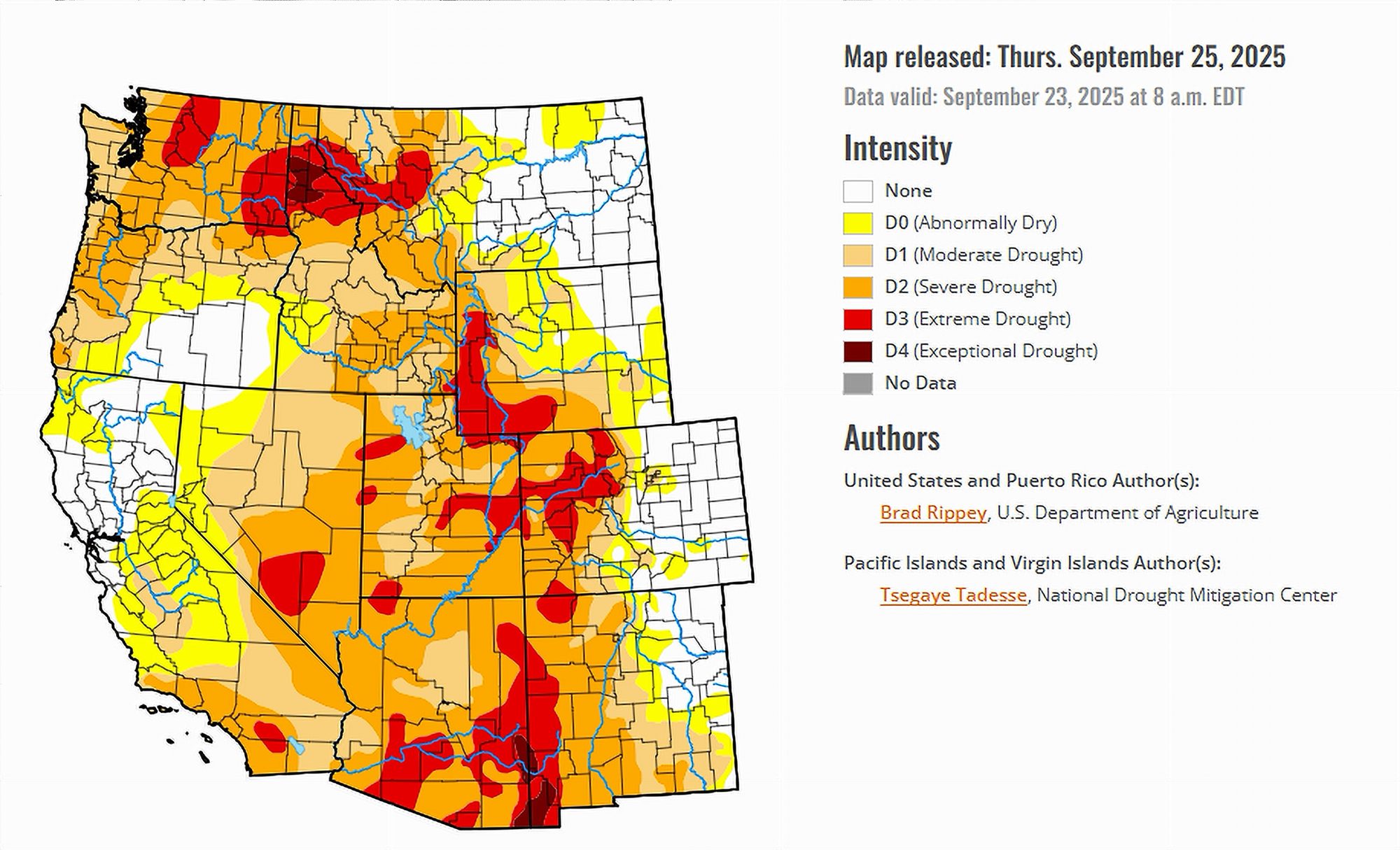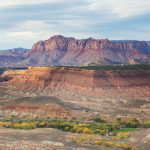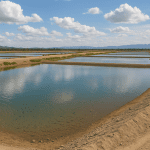- Rain eased drought in parts of the Southwest.
- Flash flooding followed storms in Arizona and California.
- Northern Basin states saw beneficial early-season snow.
- Dryness lingers in Utah and New Mexico rangelands.
Saturday, September 27, 2025 — The U.S. Drought Monitor report released on September 25, 2025, described a week of mixed outcomes. Some regions saw relief from storms, while others slipped further into drought. Precipitation fell across the Plains, Midwest, and central South, stretching from the Rockies to the Appalachians. In the Southwest, “locally significant showers” improved conditions but also brought flash flooding. Meanwhile, the Northwest and parts of the Intermountain West remained largely dry.
released on September 25, 2025, described a week of mixed outcomes. Some regions saw relief from storms, while others slipped further into drought. Precipitation fell across the Plains, Midwest, and central South, stretching from the Rockies to the Appalachians. In the Southwest, “locally significant showers” improved conditions but also brought flash flooding. Meanwhile, the Northwest and parts of the Intermountain West remained largely dry.
Arizona and New Mexico.
Both Arizona and New Mexico experienced scattered showers, bringing pockets of improvement. The report noted that the monsoon pattern delivered bursts of rainfall, but “limited drought relief” overall. While rangelands in some areas benefited, the rain also caused flash flooding in dry washes and low-lying valleys. Conditions remain stressed in eastern New Mexico, where warm, dry weather dominated during the monitoring period.
California and Nevada.
In California, rainfall reached even some of the driest landscapes, including Death Valley. While these storms led to small improvements, they also triggered flash flooding. Much of Nevada remained dry, though portions of the southern desert saw scattered showers. Longer-term drought indicators such as reservoir storage and soil moisture remain a concern despite the brief reprieve.
Colorado and Wyoming.
Colorado benefited from widespread precipitation across the central Rockies, including some high-elevation snow. The report stated that “moisture should benefit rangeland, pastures, and fall-sown crops,” although the rains temporarily slowed fieldwork and winter wheat planting. Wyoming also saw precipitation, with conditions generally improving in the eastern half of the state. These early-season storms provided much-needed soil moisture as the fall approaches.
Utah.
Utah remained largely dry, continuing a pattern of below-average rainfall. Rangelands and pastures in parts of the state continue to struggle, and water managers are watching reservoir inflows closely. The report indicated that conditions in Utah reflected the broader Intermountain West pattern, where relief has been limited compared to neighboring Colorado and Arizona.
The Outlook.
Looking ahead, forecasters expect rainfall to shift south and east, with parts of the Southwest again seeing heavy showers. The National Weather Service 6- to 10-day outlook (September 30 – October 4) calls for near- to above-normal precipitation in much of the country. However, a band stretching from the southern Plains into the Great Lakes and Northeast is expected to remain drier than normal.





